The term “squash” is a generic term that designates various climbing or creeping plants, mostly annual, belonging to the family Cucurbitaceae. These plants were domesticated by man for his food or his craft industry as well in hot regions as temperate. The Lao use several of them.
Mak nam has a white flower, a fruit of very variable shape, sometimes formed of two unequal, rounded bulges, the upper one smaller (pilgrim’s gourd), and sometimes the lower globular mass is finished by a long neck (cougourd). The shell of the fruit is hard, and woody, and the pulp is spongy, white, and tasteless. Mak nam is therefore rarely eaten and is mostly used, once the pulp is removed and dried, as a container, or musical instrument, (sounding board for mouth organs). Raquez notes that the Laotians put their tobacco “in an elongated pumpkin”, but it is as a carafe of water or another liquid that the gourd is mostly used.
This function of container the gourd also plays it in mythology since it will contain the future of humanity. There are many versions of the myth of the gourd which tells the origins of the Lao people which can be summarized as follows: God gives to the men still wild and undifferentiated, a buffalo which while dying lets escape from its nostrils a liana carrying 3 gourds. They become enormous and at maturity let escape civilized men, with various cultures, but having lost all contact with the Sky. In mythology, the gourd is called nam tao keo, a “magic carafe containing the water of life” with which a hermit can raise the dead.
Le terme « courge » est un générique qui désigne en français plusieurs plantes grimpantes ou rampantes, la plupart du temps annuelles, appartenant à la famille des Cucurbitacées. Ces plantes ont été domestiquées par l’homme pour son alimentation ou son artisanat aussi bien dans les régions chaudes que tempérées. Les Lao en utilisent plusieurs.
Mak nam a une fleur blanche, un fruit de forme très variable, tantôt formé de deux renflements inégaux, arrondis, le supérieur plus petit (gourde des pèlerins), tantôt la masse globuleuse inférieure est terminée par un long col (cougourde). L’enveloppe du fruit est dure, ligneuse, la pulpe en est spongieuse, blanche, insipide. Mak nam est donc rarement mangé et est surtout utilisé, une fois débarrassé de sa pulpe et séché, comme récipient, instrument de musique, (caisse de résonance des orgues à bouche). Raquez note que les laotiens mettent leur tabac « dans une citrouille allongée », mais c’est en tant que carafe d’eau ou d’un autre liquide que la gourde est surtout employée.
Cette fonction de récipient la gourde la joue aussi dans la mythologie puisqu’elle va contenir la future humanité. Il existe de nombreuses versions du mythe de la courge qui raconte les origines du peuple lao que l’on peut résumer ainsi: Dieu donne aux hommes encore sauvages et indifférenciés un buffle qui en mourant laisse échapper de ses naseaux une liane portant 3 courges. Elles deviennent énormes et à maturité laissent échapper des hommes civilisés, aux cultures diverses, mais ayant perdu tout contact avec le Ciel. Dans la mythologie, la courge est appelée nam tao kéo, « carafe magique contenant l’eau de vie » avec laquelle un ermite peut ressusciter les morts.
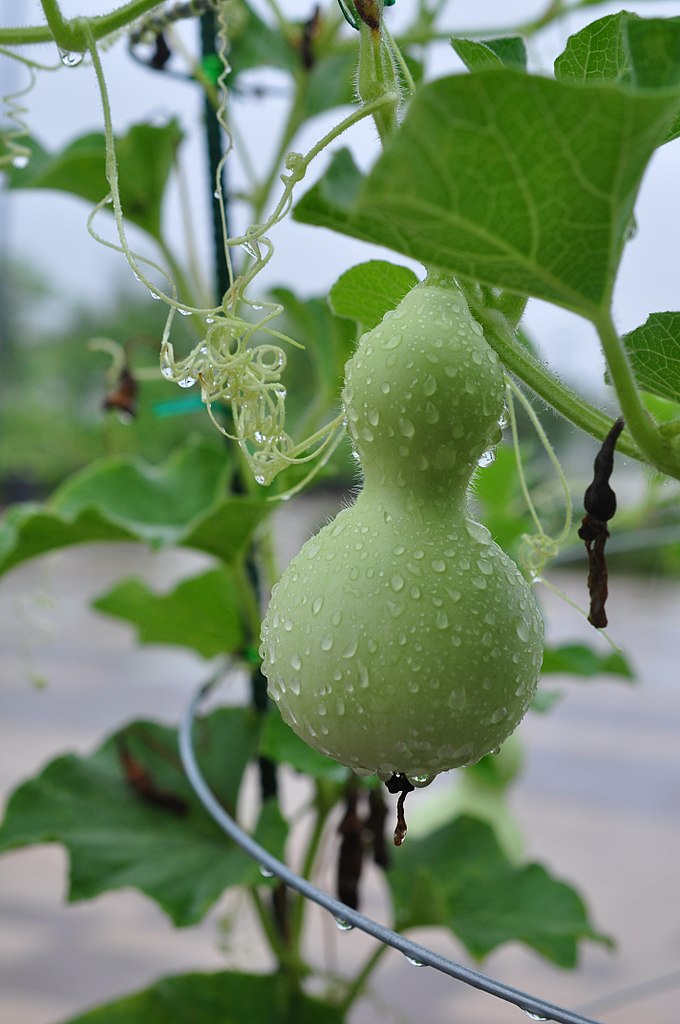
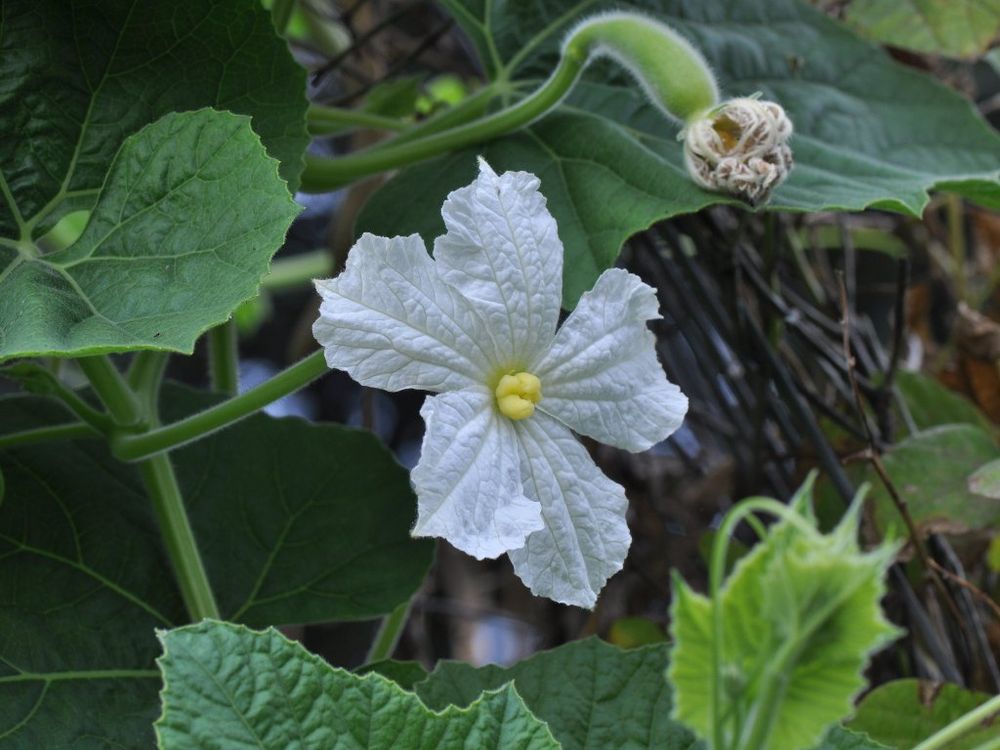
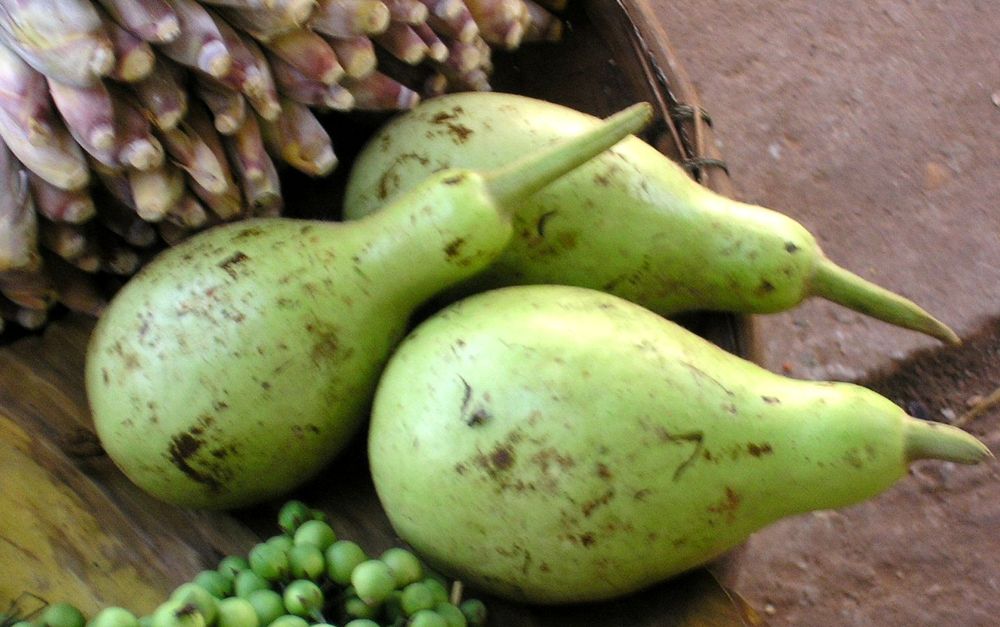
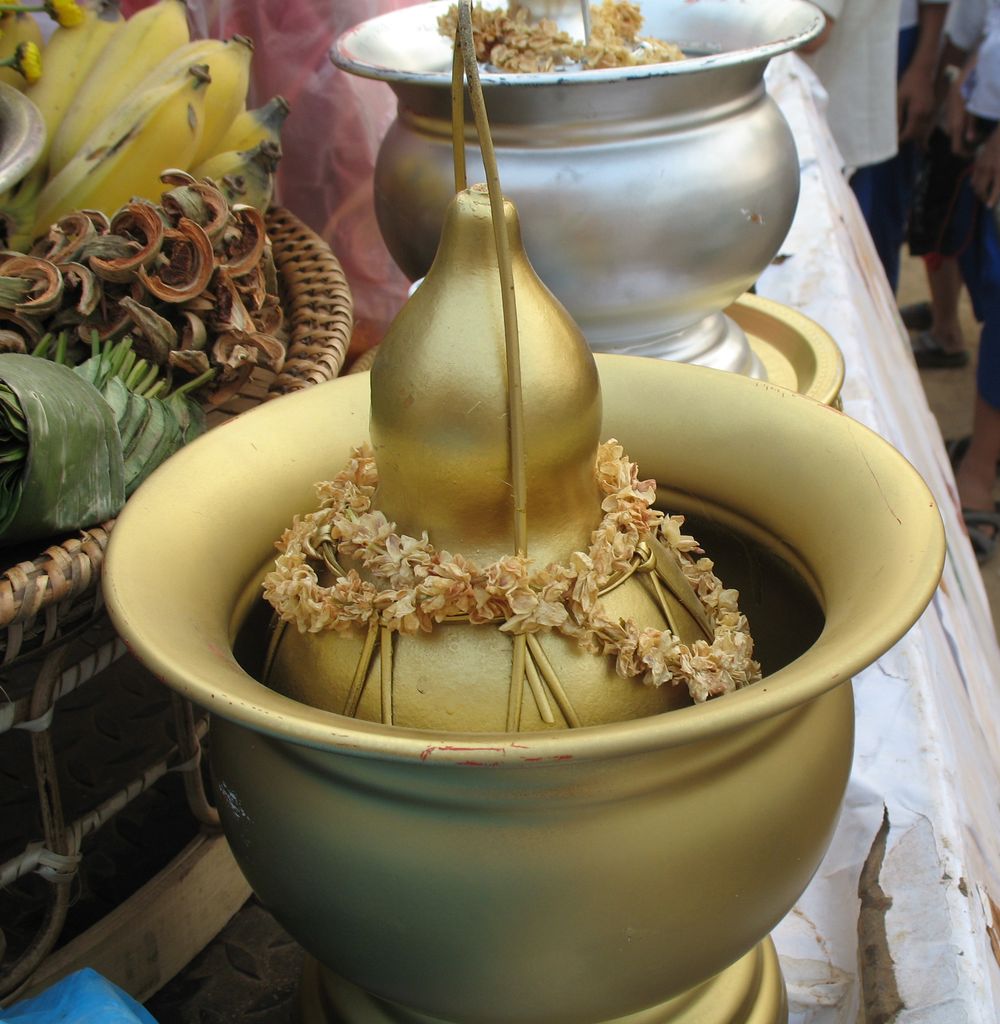
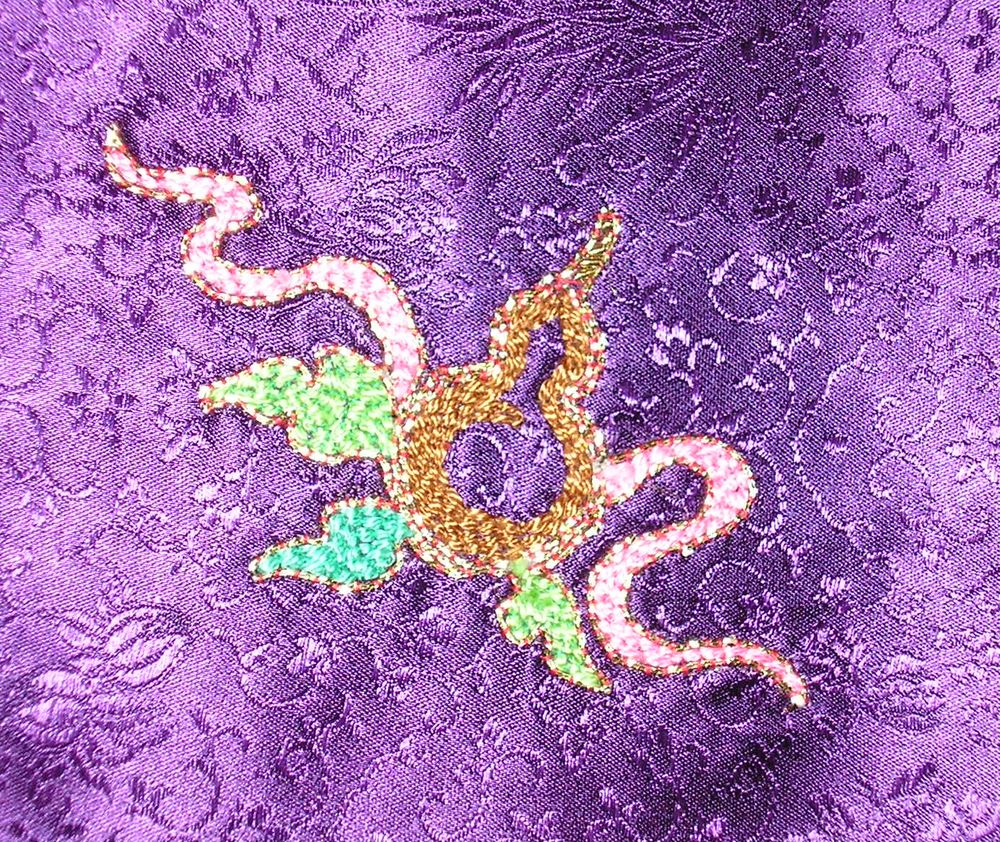
The term “squash” is a generic term that designates various climbing or creeping plants, mostly annual, belonging to the family Cucurbitaceae. These plants were domesticated by man for his food or his craft industry as well in hot regions as temperate. The Lao use several of them.
Mak nam has a white flower, a fruit of very variable shape, sometimes formed of two unequal, rounded bulges, the upper one smaller (pilgrim’s gourd), and sometimes the lower globular mass is finished by a long neck (cougourd). The shell of the fruit is hard, and woody, and the pulp is spongy, white, and tasteless. Mak nam is therefore rarely eaten and is mostly used, once the pulp is removed and dried, as a container, or musical instrument, (sounding board for mouth organs). Raquez notes that the Laotians put their tobacco “in an elongated pumpkin”, but it is as a carafe of water or another liquid that the gourd is mostly used.
This function of container the gourd also plays it in mythology since it will contain the future of humanity. There are many versions of the myth of the gourd which tells the origins of the Lao people which can be summarized as follows: God gives to the men still wild and undifferentiated, a buffalo which while dying lets escape from its nostrils a liana carrying 3 gourds. They become enormous and at maturity let escape civilized men, with various cultures, but having lost all contact with the Sky. In mythology, the gourd is called nam tao keo, a “magic carafe containing the water of life” with which a hermit can raise the dead.
Le terme « courge » est un générique qui désigne en français plusieurs plantes grimpantes ou rampantes, la plupart du temps annuelles, appartenant à la famille des Cucurbitacées. Ces plantes ont été domestiquées par l’homme pour son alimentation ou son artisanat aussi bien dans les régions chaudes que tempérées. Les Lao en utilisent plusieurs.
Mak nam a une fleur blanche, un fruit de forme très variable, tantôt formé de deux renflements inégaux, arrondis, le supérieur plus petit (gourde des pèlerins), tantôt la masse globuleuse inférieure est terminée par un long col (cougourde). L’enveloppe du fruit est dure, ligneuse, la pulpe en est spongieuse, blanche, insipide. Mak nam est donc rarement mangé et est surtout utilisé, une fois débarrassé de sa pulpe et séché, comme récipient, instrument de musique, (caisse de résonance des orgues à bouche). Raquez note que les laotiens mettent leur tabac « dans une citrouille allongée », mais c’est en tant que carafe d’eau ou d’un autre liquide que la gourde est surtout employée.
Cette fonction de récipient la gourde la joue aussi dans la mythologie puisqu’elle va contenir la future humanité. Il existe de nombreuses versions du mythe de la courge qui raconte les origines du peuple lao que l’on peut résumer ainsi: Dieu donne aux hommes encore sauvages et indifférenciés un buffle qui en mourant laisse échapper de ses naseaux une liane portant 3 courges. Elles deviennent énormes et à maturité laissent échapper des hommes civilisés, aux cultures diverses, mais ayant perdu tout contact avec le Ciel. Dans la mythologie, la courge est appelée nam tao kéo, « carafe magique contenant l’eau de vie » avec laquelle un ermite peut ressusciter les morts.










The term “squash” is a generic term that designates various climbing or creeping plants, mostly annual, belonging to the family Cucurbitaceae. These plants were domesticated by man for his food or his craft industry as well in hot regions as temperate. The Lao use several of them.
Mak nam has a white flower, a fruit of very variable shape, sometimes formed of two unequal, rounded bulges, the upper one smaller (pilgrim’s gourd), and sometimes the lower globular mass is finished by a long neck (cougourd). The shell of the fruit is hard, and woody, and the pulp is spongy, white, and tasteless. Mak nam is therefore rarely eaten and is mostly used, once the pulp is removed and dried, as a container, or musical instrument, (sounding board for mouth organs). Raquez notes that the Laotians put their tobacco “in an elongated pumpkin”, but it is as a carafe of water or another liquid that the gourd is mostly used.
This function of container the gourd also plays it in mythology since it will contain the future of humanity. There are many versions of the myth of the gourd which tells the origins of the Lao people which can be summarized as follows: God gives to the men still wild and undifferentiated, a buffalo which while dying lets escape from its nostrils a liana carrying 3 gourds. They become enormous and at maturity let escape civilized men, with various cultures, but having lost all contact with the Sky. In mythology, the gourd is called nam tao keo, a “magic carafe containing the water of life” with which a hermit can raise the dead.
Le terme « courge » est un générique qui désigne en français plusieurs plantes grimpantes ou rampantes, la plupart du temps annuelles, appartenant à la famille des Cucurbitacées. Ces plantes ont été domestiquées par l’homme pour son alimentation ou son artisanat aussi bien dans les régions chaudes que tempérées. Les Lao en utilisent plusieurs.
Mak nam a une fleur blanche, un fruit de forme très variable, tantôt formé de deux renflements inégaux, arrondis, le supérieur plus petit (gourde des pèlerins), tantôt la masse globuleuse inférieure est terminée par un long col (cougourde). L’enveloppe du fruit est dure, ligneuse, la pulpe en est spongieuse, blanche, insipide. Mak nam est donc rarement mangé et est surtout utilisé, une fois débarrassé de sa pulpe et séché, comme récipient, instrument de musique, (caisse de résonance des orgues à bouche). Raquez note que les laotiens mettent leur tabac « dans une citrouille allongée », mais c’est en tant que carafe d’eau ou d’un autre liquide que la gourde est surtout employée.
Cette fonction de récipient la gourde la joue aussi dans la mythologie puisqu’elle va contenir la future humanité. Il existe de nombreuses versions du mythe de la courge qui raconte les origines du peuple lao que l’on peut résumer ainsi: Dieu donne aux hommes encore sauvages et indifférenciés un buffle qui en mourant laisse échapper de ses naseaux une liane portant 3 courges. Elles deviennent énormes et à maturité laissent échapper des hommes civilisés, aux cultures diverses, mais ayant perdu tout contact avec le Ciel. Dans la mythologie, la courge est appelée nam tao kéo, « carafe magique contenant l’eau de vie » avec laquelle un ermite peut ressusciter les morts.


